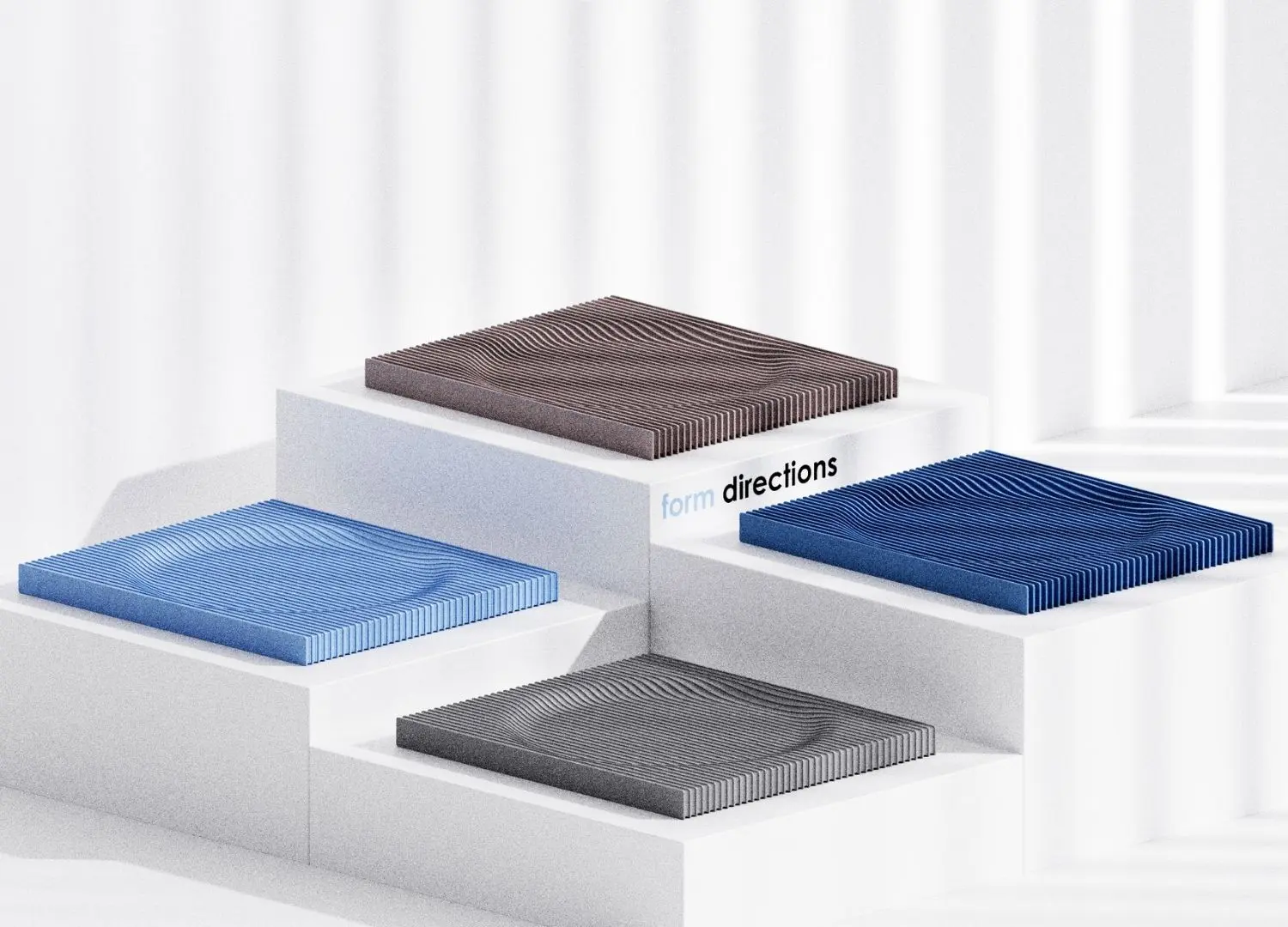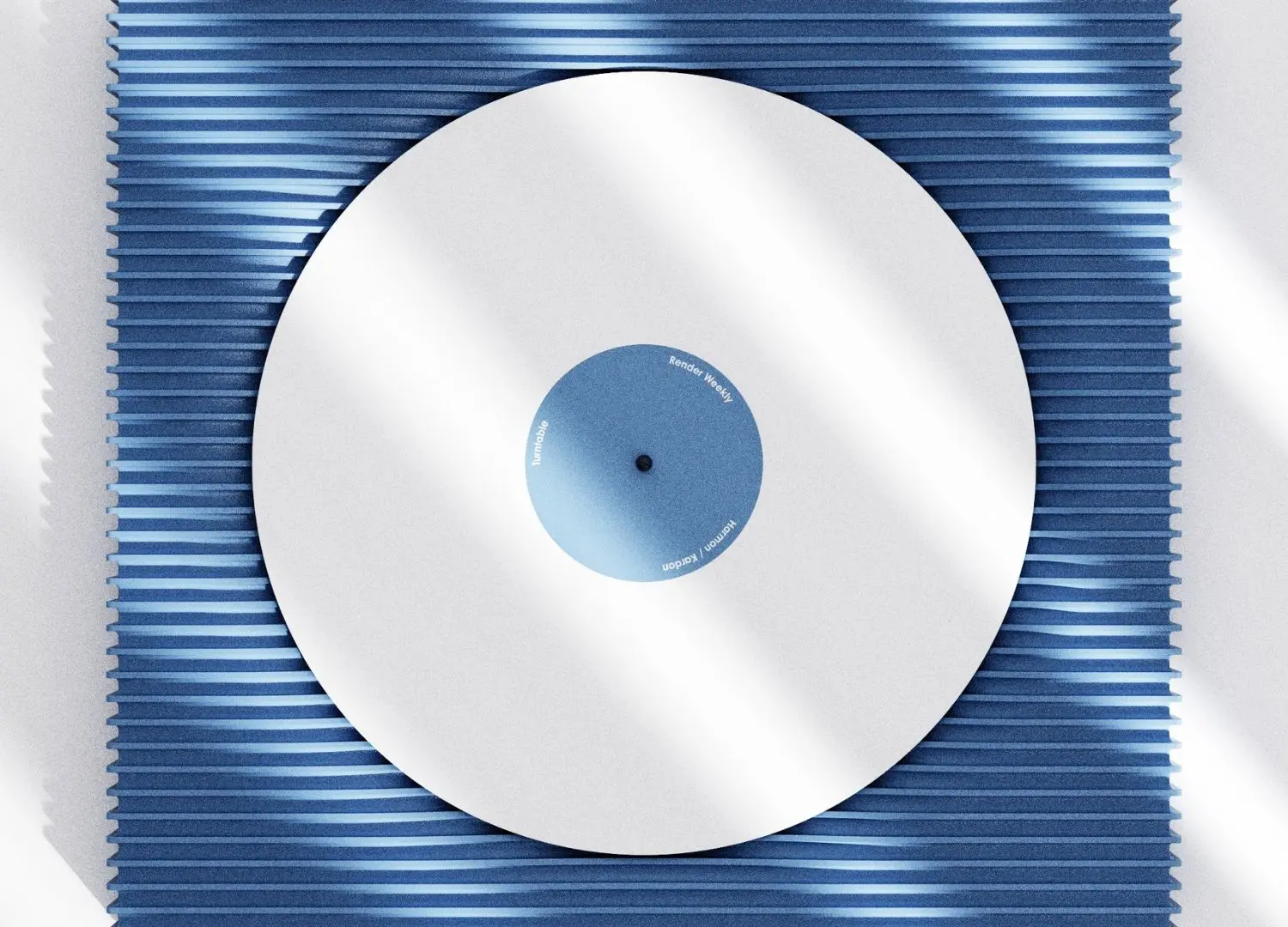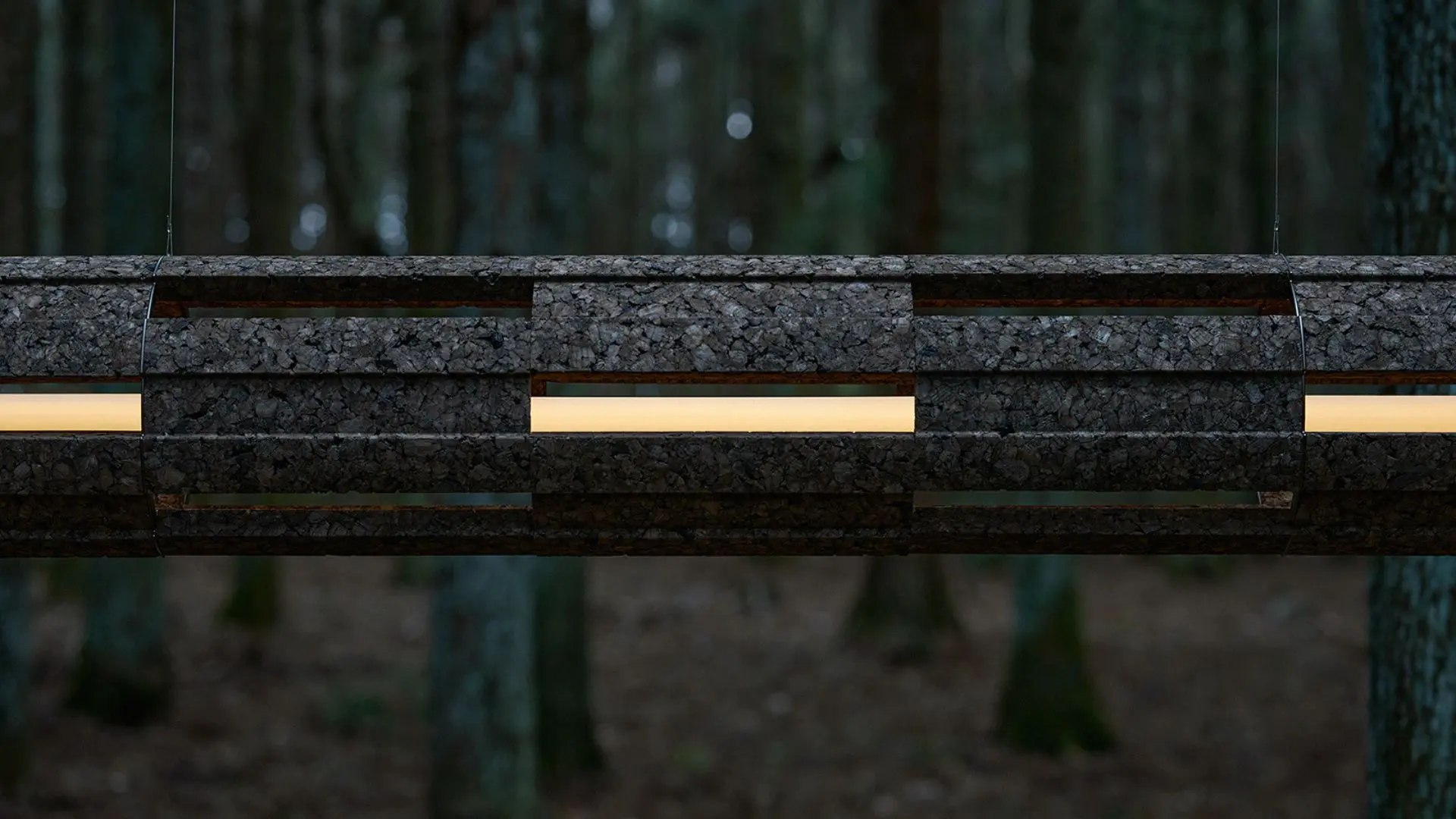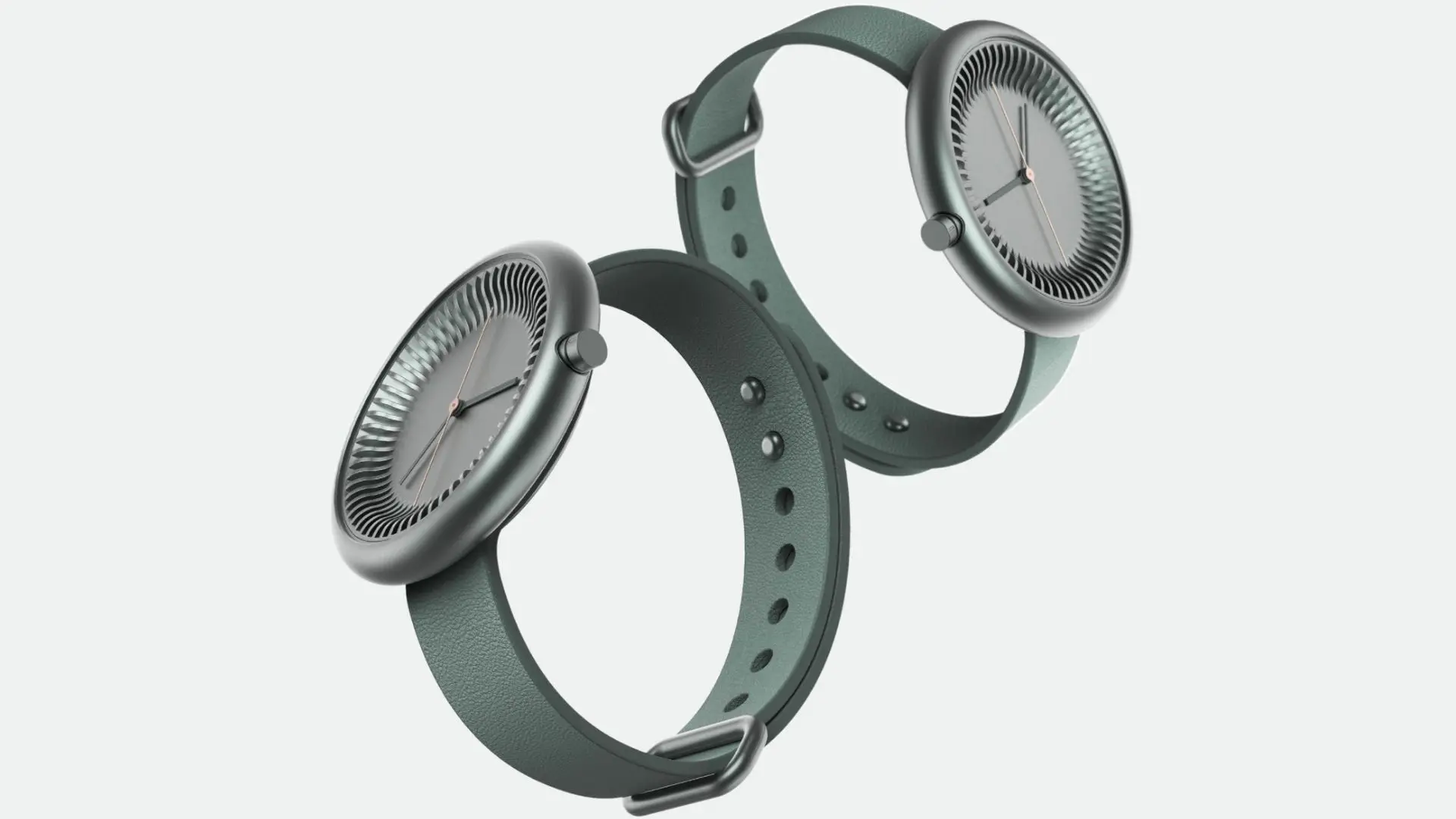Soundwaves and the texture of vinyl records inspired the Flow turntable
Flow by Udhbav Bharadwaj takes current brand motifs and combines them with the essence of music and the audio experience.

Instead of placing the user interface on the front of the speakers, the designer has chosen to place two speakers on the front and top, enabling audio to breathe through the linear slats, which draw inspiration from soundwaves and the grooves that characterise vinyl records.
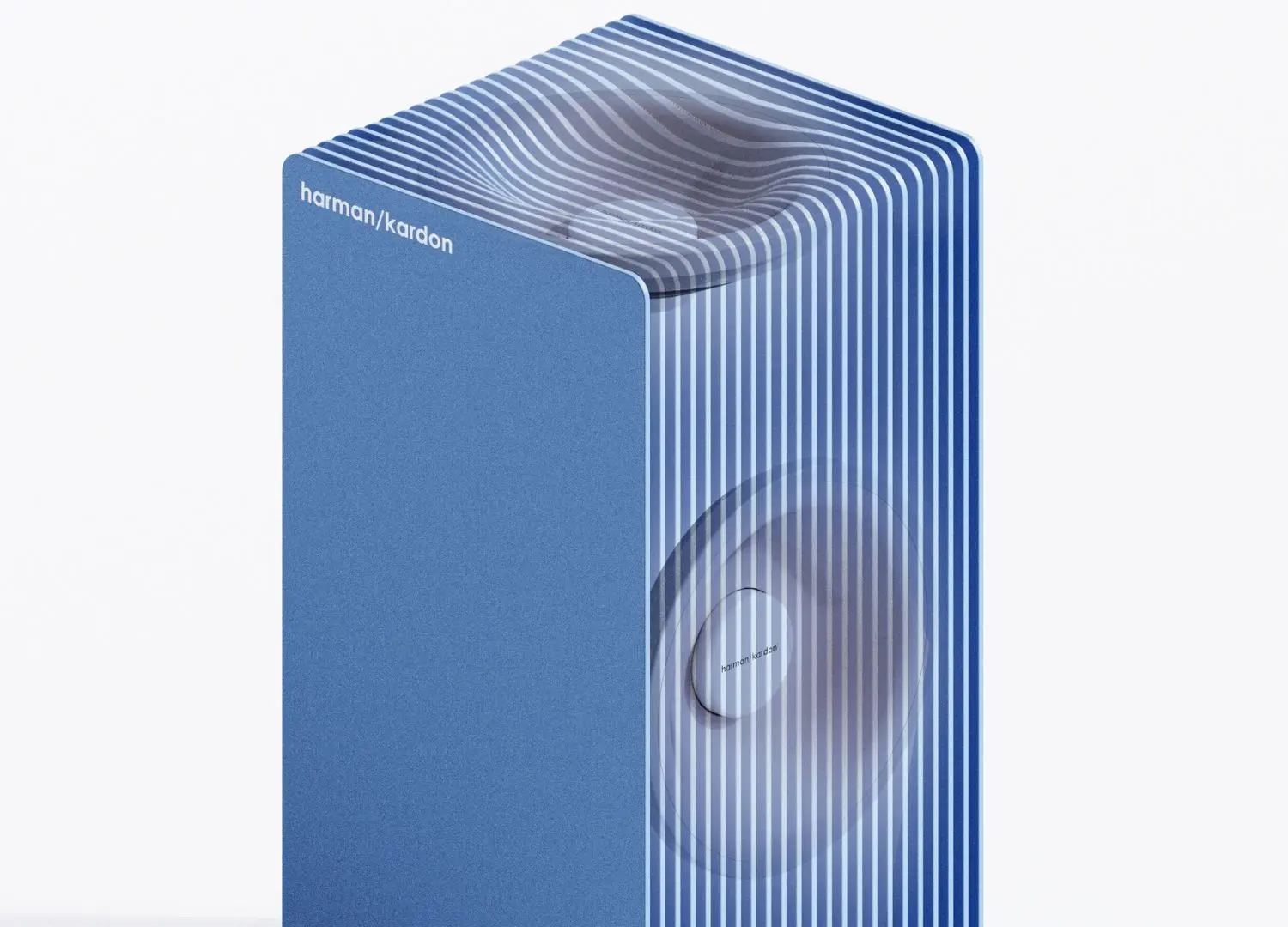
Instead of an arm, the Flow turntable works on a sliding belt, where the needle starts from the outermost point before travelling inwards to follow the grooves on the vinyl.
“It pivots on an axis, only moving 30 degrees on either side,” explains Bharadwaj.
“Once it exceeds that limit, the needle mechanism will not fight the path, and will slide inwards.
Thereby continuing the auditory experience until it has run its path.”

A contemporary turntable design like this should come with all the mod-cons, which is why Bharadwaj’s concept includes bluetooth connectivity for playing music through dedicated speakers, and is compatible with virtual assistants like google for remote controlling.
Despite the striking appearance of the flow turntable, its internals are fairly basic.
The rotating platter has a motor underneath it that spins the platter itself.
There’s also an audio DAC in the back right, which allows the turntable to output audio of the highest quality to connected speakers without requiring an external device to do so.
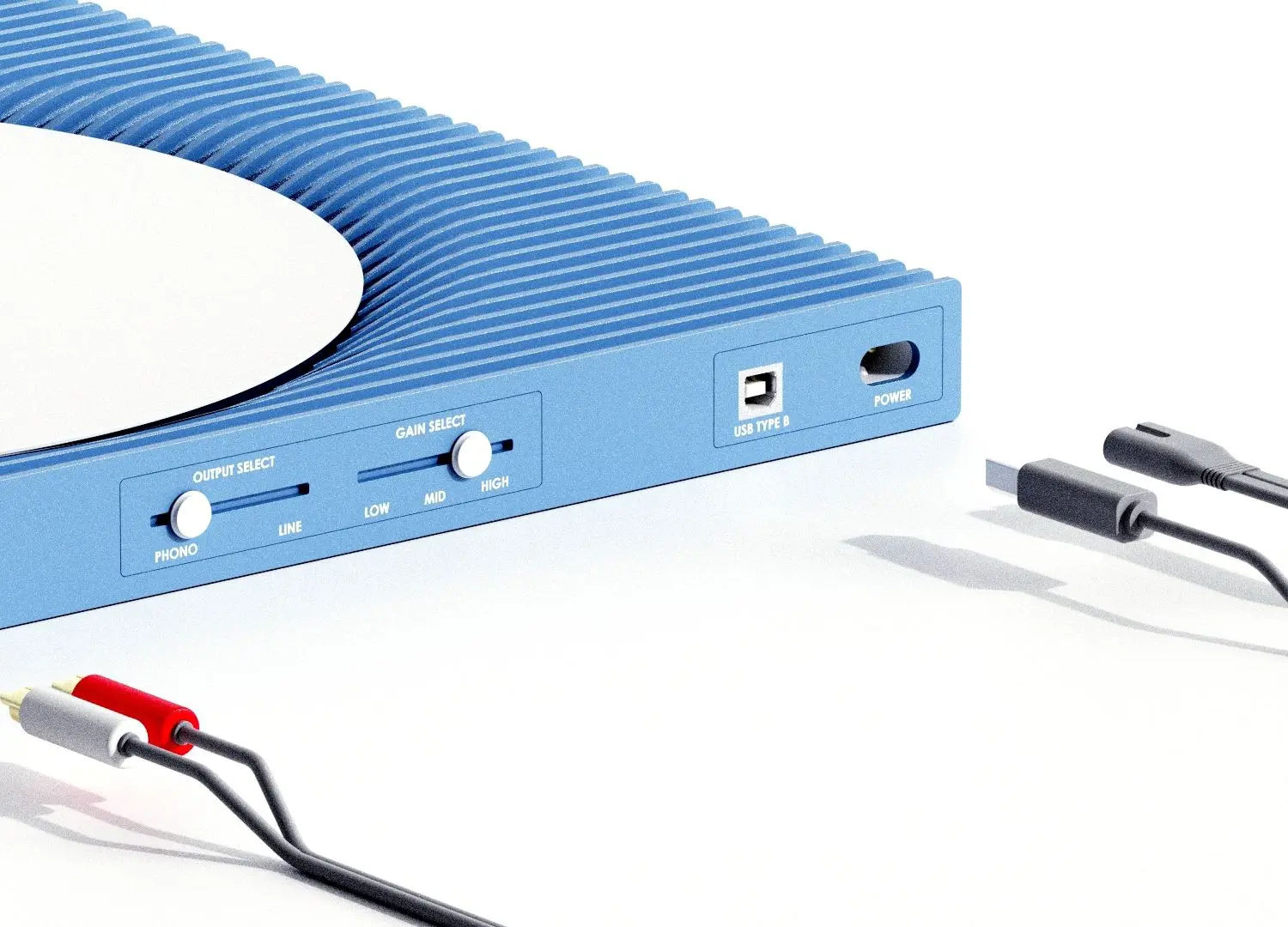
To keep messy wires from interfering with the sleek design of the speakers, cable management has been kept to a minimum with a singular AUX port and a power cable that they share with the turntable.
Meanwhile, the turntable itself utilises the same C7 power cable, the ability to connect a USB-B cable and supports up to two pairs of RCA cables for lossless audio output.
Form studies
“The design of the turntable’s body was never going to deviate from the standard form, but what would change is how that form was treated,” says Bharadwaj.
“The negative space formed by the absence of form is a visual study that was capitalised.
The migration from a negative form to a positive form, created the “flow” that served as the main form focus for this project.”
“All that was left to decide was what the overall shape was and how contrasting the negative and positive spaces could be without meddling with how the form spoke to its surroundings.”











